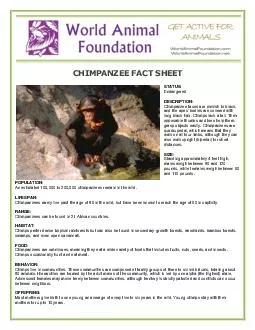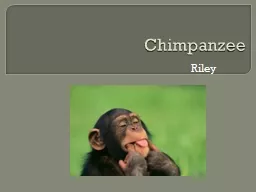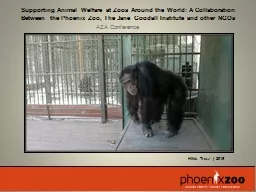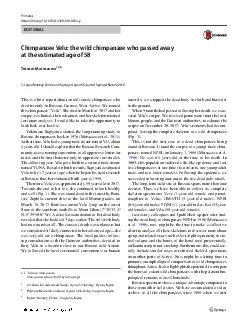PDF-STATUS Endangered DESCRIPTION Chimpanzee faces are pinkish to black and the apes bodies
Author : pasty-toler | Published Date : 2015-03-04
Chimps lack a tail Their opposable thumbs and toes help them grasp objects easily Chimpanzees are quadrupedal which means that they walk on all four limbs alt hough
Presentation Embed Code
Download Presentation
Download Presentation The PPT/PDF document "STATUS Endangered DESCRIPTION Chimpanzee..." is the property of its rightful owner. Permission is granted to download and print the materials on this website for personal, non-commercial use only, and to display it on your personal computer provided you do not modify the materials and that you retain all copyright notices contained in the materials. By downloading content from our website, you accept the terms of this agreement.
STATUS Endangered DESCRIPTION Chimpanzee faces are pinkish to black and the apes bodies: Transcript
Download Rules Of Document
"STATUS Endangered DESCRIPTION Chimpanzee faces are pinkish to black and the apes bodies"The content belongs to its owner. You may download and print it for personal use, without modification, and keep all copyright notices. By downloading, you agree to these terms.
Related Documents














